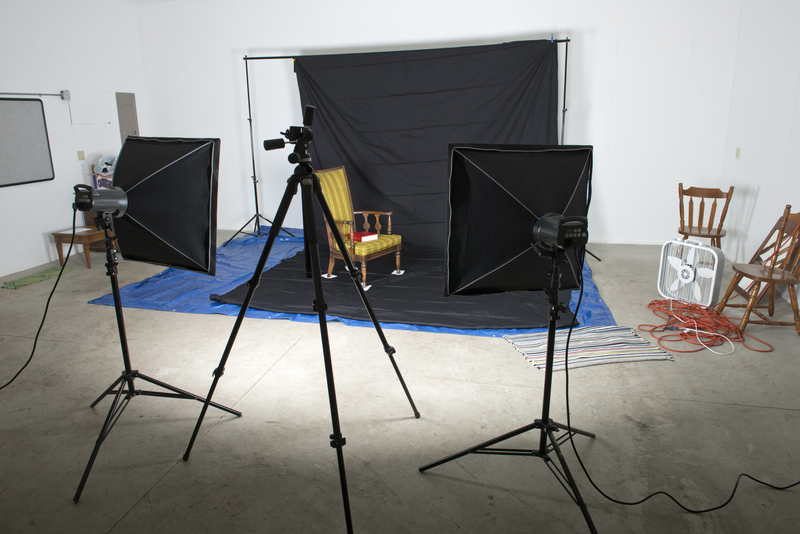Images and Article by Kevin Thomas
There is virtually no business that provides complete, unrestricted freedom. The great thing about online microstock is you can work as hard or as little as you want whenever you want. However, CREATING the business requires both personal and financial resources. This is where many fail. If you think all you need is a camera and a computer, then you’re only looking for easy money and there is no such thing as easy money. Sweat, blood, and tears are always required for anything you wish to be successful in. Fortunately there is no real physical pain for doing microstock but the dedication and mindset are still necessary.

So what does it take to get started with creating your own business with online stock photography and illustrations?
First of all, you need the proper tools. A good camera is obvious, but having multiple lenses, a tripod, and lighting equipment are also necessary. Yes, a point and shoot camera and some cell phones take quality images, but these kinds of cameras and imaging devices limit what you can photograph.
If you think lighting equipment is not necessary, think again. Landscapes and snapshots around your neighborhood can be done outside but if you plan to make MONEY with microstock, the bread and butter will come from studio photography. Your studio may be as simple as whatever can fit on your kitchen table but you need to go beyond the generic sites around your locale if you want to make it in microstock.
You are also going to need software and a computer that can handle the software. Most beginners use products such as Lightroom. Lightroom is a fantastic product for managing files and making simple adjustments to snapshots, but microstock is over-saturated with snapshots. You need powerful image editing software in order to manipulate pictures and to create unique concepts.
The skill to use advanced software is also necessary. There are online tutorials, books, and evening classes available at local education venues for learning the software. Software also means having a computer for managing and editing photographs. The monitor can’t be the cheap starter model, it needs to be large with an adequate workspace and the graphics capabilities should be at a level for image editing. You will want a video card that is fast enough and powerful enough.
Again, if you want to dabble in microstock just for fun, then all you virtually need is a cell phone with good imaging built into it. If the goal in microstock is to create a side business with a steady income, then you need to invest both time and money in order to be competitive. The thing is, though, if you are passionate for photography or digitial art, then you should already be purchasing the hardware and software you need in order to pursue your hobby. Turning your hobby into a profession is merely the next step.
A lot of people like to take pictures and their friends and family will say nice things like they have “the eye” for photography. The head swells up, the ego takes over, and suddenly you’re the next Ansel Adams. One of the best things you can do in photography is to join a camera club and/or take some photography classes. Getting critiques from your peers is a lot more humbling than having your mother laud you with compliments. Associating with people who are also passionate for photography and those who have already gone through the gauntlet will open your eyes to many new ideas and techniques. You will benefit from their sage experience.
Lastly, there is one thing even professional photographers struggle with, and that’s coming up with ideas. The biggest point of failure is people forget that microstock is a world of commercial photography. Mundane things like someone mowing the grass may have a better chance of selling than a fantastic picture of a sunset. Coming up with ideas that will sell is a process of trial and error. You are also limited with what you can do. This is one of the reasons why I stress being able to use image editing software: Being able to manipulate images gives you more options with the ideas you can create. Having unique images and ideas that have little competition from others will have a greater chance of selling.
But when it comes to ideas, you are pretty much on your own. There is no short list of concepts that will ensure success and many sales. At least be aware that microstock is an extremely competitive endeavor. If you use your photography time to create images that many other photographers are doing, the return on investment is going to be minimal. The more creative you are, the more you can zero in on concepts that buyers are looking for, along with quality execution, these are factors that will enhance or degrade your ability to beat your competition.
You should always be willing to try new things, take risks and get out of your comfort zone too.
If you can overcome the obstacles, then you too can find a niche in microstock. It’s doubtful for most to think of being able to do this for a living but having a steady income on the side is the next best thing. The experience you gain from the world of commercial and professional photography will also help to build your skills as a photographer in general. If photography and digital art is your passion, then microstock may be the next step for leaving the ranks of hobbyists and entering the professional side of photography. Good luck!